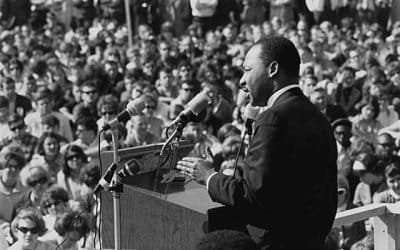The U.S. Supreme Court issued a ruling in Cuyahoga Falls v. Buckeye Community Hope Foundation last month, unanimously ordering summary dismissal of a lawsuit arising from a 1996 referendum held by the city of Cuyahoga Falls, Ohio. The referendum sought to deny a private corporation the right to use its property. Not surprisingly, the referendum passed, which in turn led to eight years of litigation that ended with today’s decision.
Buckeye Community Hope Foundation is a nonprofit corporation that develops low-income housing. In 1995, Buckeye purchased land in Cuyahoga Falls, and submitted a site plan to the city to develop a low-income housing complex. The city council reviewed the plan, and after finding it met all technical zoning requirements, enacted an ordinance permitting the project to proceed.
The council’s action was apparently unpopular with the community at-large. Justice Sandra Day O’Connor, in her opinion for the Court today, offered the following summary of what happened in Cuyahoga Falls:
As the final approval process unfolded, public opposition to the plan resurfaced and eventually coalesced into a referendum petition drive. See Cuyahoga Falls City Charter, Art. 9, §2 (hereinafter City Charter), App. 14 (giving voters “the power to approve or reject at the polls any ordinance or resolution passed by the Council” within 30 days of the ordinance’s passage). At city council meetings and independent gatherings, some of which the mayor attended to express his personal opposition to the site plan, citizens of Cuyahoga Falls voiced various concerns: that the development would cause crime and drug activity to escalate, that families with children would move in, and that the complex would attract a population similar to the one on Prange Drive, the City’s only African-American neighborhood.
Motivated largely by fear (and, it seems, overt racism), a group of residents exercised their power under the city charter to call a referendum to overturn the city ordinance allowing Buckeye’s development. In November 1996, the referendum passed, and the litigation commenced in both state and federal court.
In July 1998, the Ohio Supreme Court held the referendum was invalid under the Ohio constitution. That court found the state only permitted referendums on legislative matters, not administrative acts such as approving Buckeye’s site plan. Thus, the referendum itself never took effect, and Buckeye obtained its building permits to develop the Cuyahoga Falls complex.
But this did not end the federal litigation, which took the form of a demand for declaratory and monetary relief against the city and several of its officials. Buckeye claimed that in submitting its site plan to a referendum, the city violated Buckeye’s rights under the Equal Protection and Due Process Clauses of the Fourteenth Amendment, as well as federal housing discrimination law. In November 1999, a district court granted summary judgment for the city. The U.S. Court of Appeals for the Sixth Circuit, based in Cincinnati, reversed this dismissal and ordered the case be tried. Today’s Supreme Court decision reverses the Sixth Circuit and reinstates the trial court’s summary judgment for Cuyahoga Falls, effectively ending the case.
The Supreme Court found that Buckeye failed to present a legal argument that could survive summary judgment. The Court, citing precedent, said that in order to pursue an Equal Protection Clause case, Buckeye must offer “proof of racially discriminatory intent or purpose” on the party of the city. Since the city merely enforced its own charter in allowing the referendum, the Court said the city’s motives were “facially neutral,” and thus not the proper subjects of an Equal Protection claim. The Court said Buckeye (and the Sixth Circuit) improperly relied “on evidence of allegedly discriminatory voter sentiment.” In other words, Buckeye can not ascribe the racism of voters in pursuing the referendum to official state action.
On the Due Process issue, the Court found that Buckeye could only pursue such an argument if they could show the city’s actions were “egregious or arbitrary.” Unlike the Ohio Supreme Court, federal constitutional law has no basic problem with submitting a question to a referendum. Since the city’s actions pursuant to the referendum were essentially ministerial, the Court held Buckeye possessed no cognizable “substantive” due process argument under the Fourteenth Amendment.
In a concurring opinion, Justice Antonin Scalia (joined by Justice Clarence Thomas) said that even if the city had acted arbitrarily in holding the referendum, it would still not be a violation of the Due Process Clause, because the Constitution only protects “fundamental liberty interests” from arbitrary state action, except where such action is narrowly tailored to meet a compelling government interest.
While the Court’s opinion, and Justice Scalia’s concurrence is technically consistent with existing case law, this case conclusively demonstrates the flaws with the Court’s basic jurisprudence on the issue of property rights. Stripped of legalisms, this case arose from Cuyahoga Falls’ decision to subject private property rights to a public vote. Regardless of whether voters were motivated by racism, fear, or simple animus towards Buckeye’s motives, the city’s actions were a violation of Buckeye’s fundamental right to make use of its property. The Court should have allowed Buckeye’s lawsuit against the city to proceed, for the referendum process caused substantial damage to Buckeye’s interests (i.e., the cost of fighting and overturning the referendum), and the city possessed no compelling or substantial interest in violating Buckeye’s property rights.
The Supreme Court has long been passive on property rights issues, upholding even the most heinous of zoning schemes. Last Term, for example, the Court upheld a local government’s decision to ban all land development without compensating owners for their loss, as required by the Fifth Amendment. Last month, the justices denied review in a case where the state of New York confiscated a privately-owned building which was then handed to another private company. In case after case, the Court has effectively maintained that property rights are no longer “essential” under the Constitution. This means property owners must jump through a plethora of judicially-created hoops, such as first establishing a property “interest” under the Due Process Clause, then showing why the government’s actions are “arbitrary and capricious.”
In the case of Buckeye, the Court basically said that no decision made by referendum could be arbitrary or unfair, since the action was democratically made. Indeed, the Court’s opinion praises the Cuyahoga Falls’ referendum as a glorious expression of constitutional virtue:
[B]y adhering to charter procedures, city officials enabled public debate on the referendum to take place, thus advancing significant First Amendment interests. In assessing the referendum as a “basic instrument of democratic government,” Eastlake v. Forest City Enterprises, Inc., 426 U. S. 668, 679 (1976), we have observed that “[p]rovisions for referendums demonstrate devotion to democracy, not to bias, discrimination, or prejudice,” James v. Valtierra, 402 U. S. 137, 141 (1971). And our well established First Amendment admonition that “government may not prohibit the expression of an idea simply because society finds the idea itself offensive or disagreeable,” Texas v. Johnson, 491 U. S. 397, 414 (1989), dovetails with the notion that all citizens, regardless of the content of their ideas, have the right to petition their government.
This completely misses the point. How Buckeye chooses to use its property is not a proper subject for “public debate” in the first place. Under the Court’s reasoning, any violation of property rights is constitutionally sound, so long as there is ample room for the public to express its views. Certainly, individuals are free to express their thoughts on any subject, including how a neighbor uses their property. But this right to expression does not constitute a right to action, and it assuredly does not permit the use of force to negate the rights of others whom you disagree with. Yet that’s precisely what happened to Buckeye–their rights were negated through the city’s force via the referendum. But rather than recognize this fact, the Court prefers to cloak the Cuyahoga Falls lynch-mob mentality in the First Amendment. This does a profound disservice to both the First Amendment and the rest of the Constitution, which does take pains to emphasize the importance of property rights.
Justice Scalia is equally noxious in his opinion, asserting: “There is nothing procedurally defective about conditioning the right to build low-income housing on the outcome of a popular referendum.” If that’s the case, then property rights no longer enjoy equal constitutional protection with life, liberty, speech, etc. None of those rights require a popular vote, and indeed the Court would likely strike down any attempt to impose such a requirement. Yet property rights are consigned to the constitutional ghetto, despite no evidence in the constitution’s text or intent that permit such a radical interpretation. One would think a self-avowed “textualist” (or “originalist” or “strict constructionist,” take your pick) would know better. But even the mighty Scalia can’t bring himself to take a principled stand for property rights.
The 9-0 ruling sends a message to advocates of property rights: the federal courts will not protect you. This means the fight must be taken to the state courts (which did come to Buckeye’s rescue) and the nation’s legislatures. While the Buckeye case may not serve as a turning point in the battle to restore property rights, it is nonetheless an ominous indicator of just how far we have to go.



